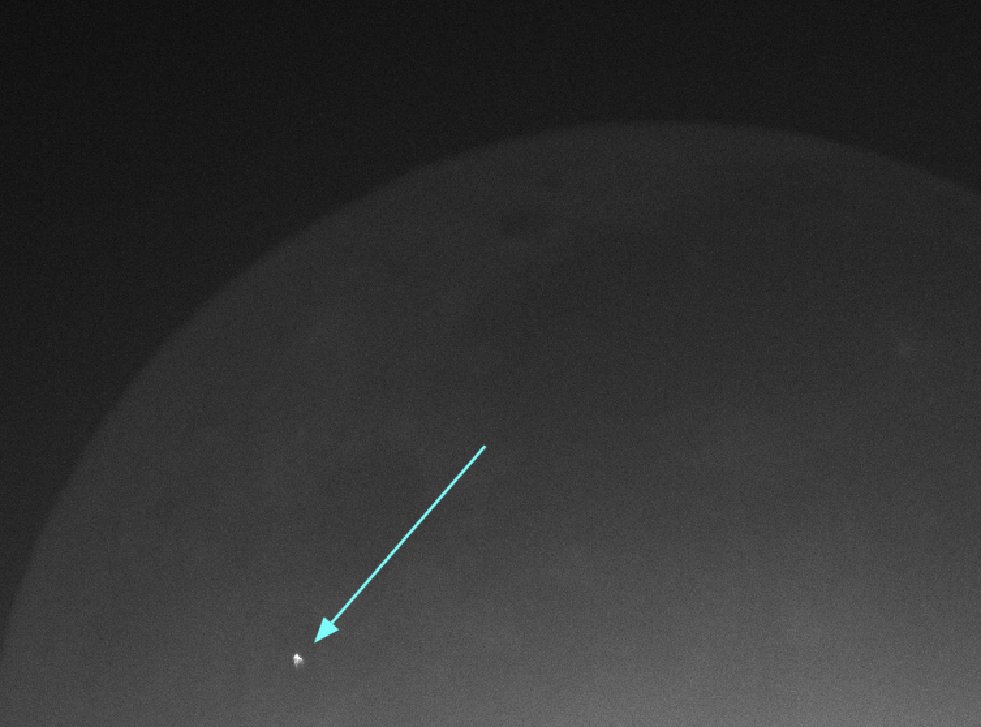Development of new systems for the observation of lunar impact flashes and the IAA participation in the ESA P3NEOI project
- 1Instituto de Astrofísica de Andalucía, CSIC, Apt. 3004, Camino Bajo de Huetor 50, 18080 Granada, Spain (madiedo@cica.es)
- 2Complejo Astronómico de La Hita, Fundación AstroHita, La Puebla de Almoradiel, Toledo, Spain
Abstract
We present the contribution of our team to ESA's P3-NEO-I project, where we have been responsible for the detection and analysis of lunar impact flashes. These events provide key information about the impact processes taking place when meteoroids hit the Moon, and also allow to quantify the impact hazard of asteroids and comets for Earth. We also focus on the development of a new system for lunar impact flashes observations which has been deployed at the Calar Alto Observatory (Spain). This system can observe these events simultaneously in three different wavelengths by means of high-frame-rate and high-resolution CMOS cameras.
1. Introduction
The identification and analysis of flashes produced by the impact of meteoroids on the lunar surface is one of the techniques suitable for the study of the flux of interplanetary matter impacting the Earth. This method has the advantage that the area covered by one single detection instrument is much larger than the atmospheric volume monitored by meteor detectors on Earth. Our team at the Institute of Astrophysics of Andalusia (IAA-CSIC) has been involved in the observation and analysis of these events since 1997 [1]. Since then, impact flashes have been unambiguously detected during the maximum activity period of several major meteor showers by using this technique, and flashes of sporadic origin have been also recorded [2].
For the detection of lunar impact flashes we have employed telescopes endowed with high-sensitivity CCD video cameras. Most of out telescopes are Schmidt-Cassegrain instruments with an aperture ranging between 28 to 50 cm, although some observational campaigns have been also performed with much larger instruments, such as, for instance, the 3.5 m telescope located at the Calar Alto Observatory [3].
During the last decade we have performed important improvements in the systems employed to detect these flashes. Most of these advances involved the use of faster cameras with higher resolution working at different wavelengths. In this work we focus on the systems employed by our team in the framework of ESA's P3NEOI project, and also on a new fast multiwavelength system deployed at the Calar Alto Observatory.
2. Contribution to the P3NEOI project
Since 2019 our team is member of a consortium of eight astronomical observatories leaded by the company Deimos Space, This consortium presented a technical proposal to the ESA ITT AO/1-9591/18/D/MR "P3NEOI: observational support from collaborating observatories". We are responsible for the work package (WP) dedicated to the detection and analysis of lunar impact flashes. One of the aims of this WP is the quantification of the flux of interplanetary matter that impacts our planet. For this purpose we have employed several telescopes located at three observatories in Spain: La Sagra, La Hita, and Sevilla. New instrumentation has been tested within this WP, including CMOS cameras with a maximum frame rate of 168 fps at full resolution (1920x1200 pixels). A sample impact flash recorded with one of these devices is shown in Figure 1. The main advantages of these cameras in relation to previously-employed imaging devices have been analyzed. One of their main utilities is related to their ability to obtain light curves with enhanced resolution. The monitoring in different wavelengths has also provided the temperature of lunar impact flashes.

Figure 1. Lunar impact flash recorded in the framework of the ESA P3NEOI project on 27 May 2020 at 20h48m49s UT, with a peak apparent magnitude of 5.5.
3. New instrumentation at CAHA
Our team has deployed a new telescope at the Calar Alto Observatory (Spain) and one of its goals is to observe lunar impact flashes. This instrument has an aperture of 60 cm and employs a set of high-speed CMOS cameras (with a frame rate of 300 fps) that can observe, simultaneously, at three different wavelengths: namely, I, V and R. The telescope, which has been founded by the Spanish Ministry for Science and Innovation, is located within a dedicated 4-m automated dome and works in a coordinated way with the rest of instruments we are currently employing at different observatories in our country. Figure 2 shows an image of this new instrument, which can be controlled remotely. This new telescope has implied an important step for the analysis of the collision of meteoroids with the lunar ground.
Figure 2. The new 60 cm telescope deployed at the Calar Alto Observatory.
References
[1] Ortiz, J.L. et al., J., 1999. A search for meteoritic flashes on the Moon. Astron. Astrophys. 343, L57–L60.
[2] J.L. Ortiz, et al., 2000, Optical detection of meteoroidal impacts on the Moon. Nature 405, 921–923.
[3] Madiedo J. M., Ortiz J. L., Yanagisawa M., Aceituno J. and Aceituno F. (2019b). "Impact flashes of meteoroids on the Moon". Meteoroids: Sources of Meteors on Earth and Beyond, Ryabova G. O., Asher D. J., and Campbell-Brown M. D. (eds.), Cambridge, UK. Cambridge University Press, ISBN 9781108426718, 2019, p. 136-158
How to cite: Madiedo, J. M., Ortiz, J. L., Morales, N., Santos-Sanz, P., Organero, F., Ana, L., and Fonseca, F.: Development of new systems for the observation of lunar impact flashes and the IAA participation in the ESA P3NEOI project, European Planetary Science Congress 2021, online, 13–24 Sep 2021, EPSC2021-754, https://doi.org/10.5194/epsc2021-754, 2021.

